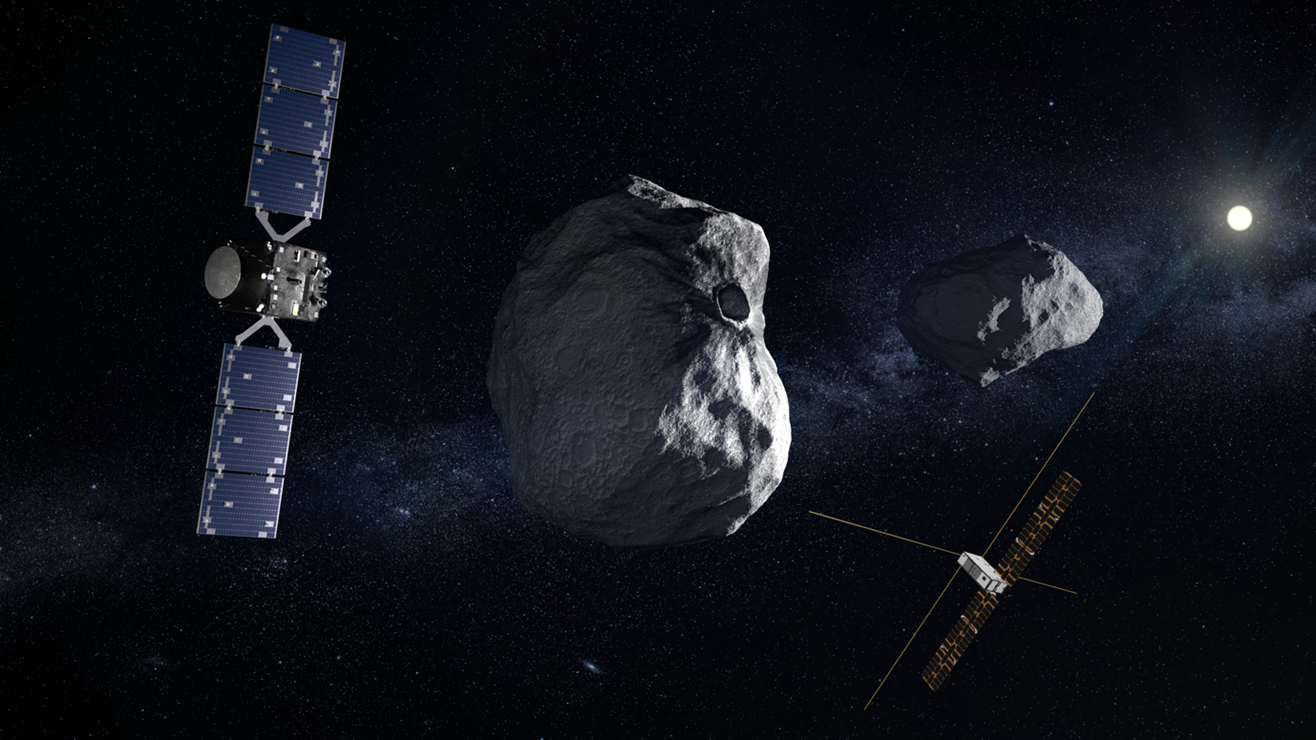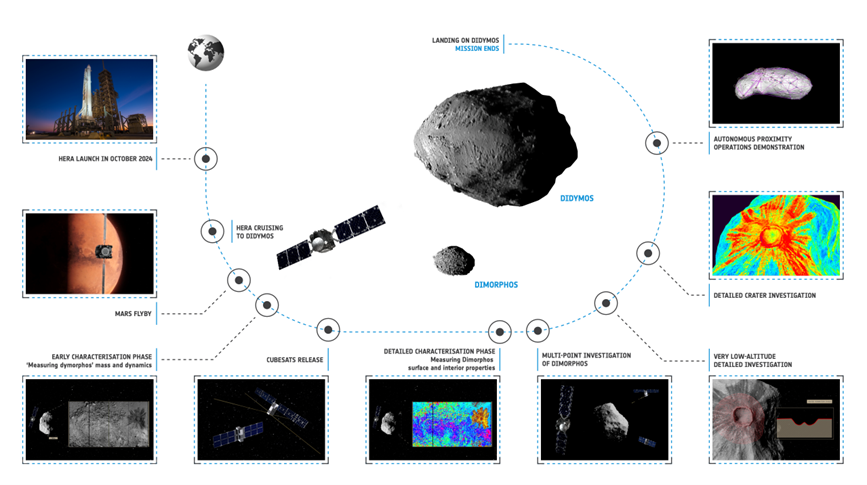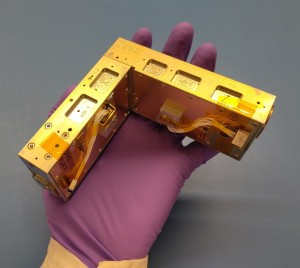Hera Launch: Learning to Deflect an Asteroid
Brussels, 30 September 2024 – To protect Earth from asteroids, the Royal Observatory of Belgium participates in the European Space Agency’s Hera mission, which is set to launch on Monday, 7 October 2024 at 16:52 Belgian time (first day of the launch window).
Targeting the binary asteroid system Didymos, the Hera mission is Europe’s contribution to an international experiment in planetary defence to protect Earth against asteroid impacts. It is also a scientific mission focusing on the origin and evolution of our Solar System. It follows on from NASA’s DART mission in 2022, which successfully tested an asteroid deflection by impact technique on Dimorphos, the small moon of the Didymos binary system.
The Hera mission is the first European planetary defence mission and the first mission to rendezvous with a binary asteroid. The Didymos binary system is the smallest and fastest-spinning asteroid system ever visited by a space mission. Hera will use advanced imaging tools and deploy two CubeSats, Milani and Juventas, to analyse the asteroids’ structure and composition.
The Royal Observatory significantly contributes to Hera, notably by developing one of its onboard instruments, GRASS (GRAvimeter for Small Solar system objects), with the Spanish company EMXYS. GRASS will be the first instrument to directly measure the surface gravity of an asteroid, which is a million times weaker than the Earth surface gravity.
Onboard the CubeSat Juventas, GRASS will land on Dimorphos in 2027 and provide detailed information about the interior structure and dynamics of the binary asteroid system. This information will be used to improve our knowledge of near-Earth objects and to develop future diversion strategies for asteroids that could threaten to collide with the Earth.
The Royal Observatory also contributes to the study and simulations of the landing of Juventas on the asteroid. Touching the asteroid’s surface with the small spacecraft is scientifically very interesting, while the landing itself is extremely challenging because of the particularly low gravitational force. In addition, the Observatory, together with VITO Remote Sensing, has contributed to the development and analysis of data from the TIRI thermal imager on board the main Hera spacecraft. TIRI will take images of Didymos and Dimorphos in the mid-infrared spectral range to resolve their surface temperatures and help us understand the thermophysical properties of their surfaces and sub-surfaces.
More information
https://www.heramission.space
https://www.esa.int/Space_Safety/Hera
https://www.esa.int/Space_Safety/Hera/Hera_asteroid_mission_launch_kit
https://www.spacex.com/
Videos on Hera
https://www.youtube.com/watch?v=wXMv-ZU-3zc
https://www.youtube.com/watch?v=8PIwxKma1tw&t=88s
https://www.youtube.com/watch?v=MErloMuo55o
EMXYS and VITO websites
https://www.emxys.com/
https://vito.be/en/about-vito
TIRI webpage
https://remotesensing.vito.be/services/tiri-thermal-infrared-imager-onboard-hera
Our previous communications on Hera and DART
https://www.astro.oma.be/en/the-royal-observatory-of-belgium-and-emxys-receive-go-for-participation-in-planetary-defence-hera-space-mission/
https://www.astro.oma.be/en/dart-the-royal-observatory-of-belgium-participates-in-a-nasa-planetary-defence-mission/
https://www.astro.oma.be/en/dart-impact-on-an-asteroid-a-milestone-for-the-royal-observatory-of-belgium/
https://www.astro.oma.be/en/successful-test-campaign-for-the-grass-instrument/



